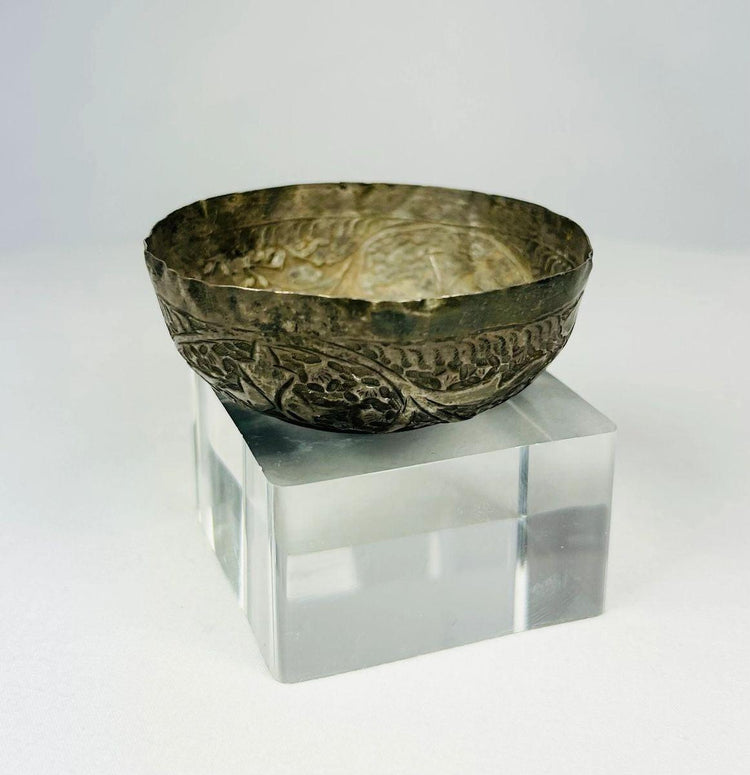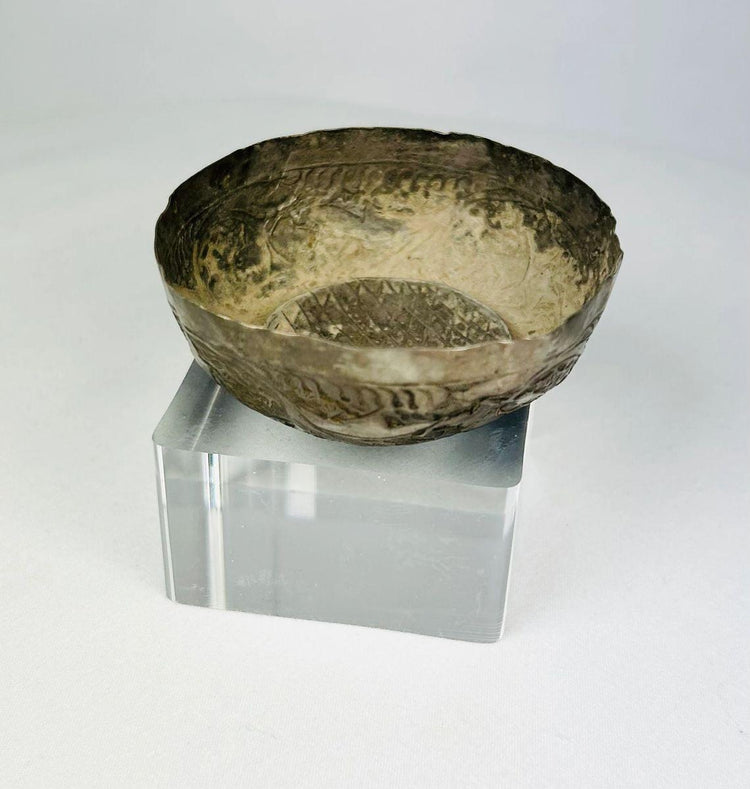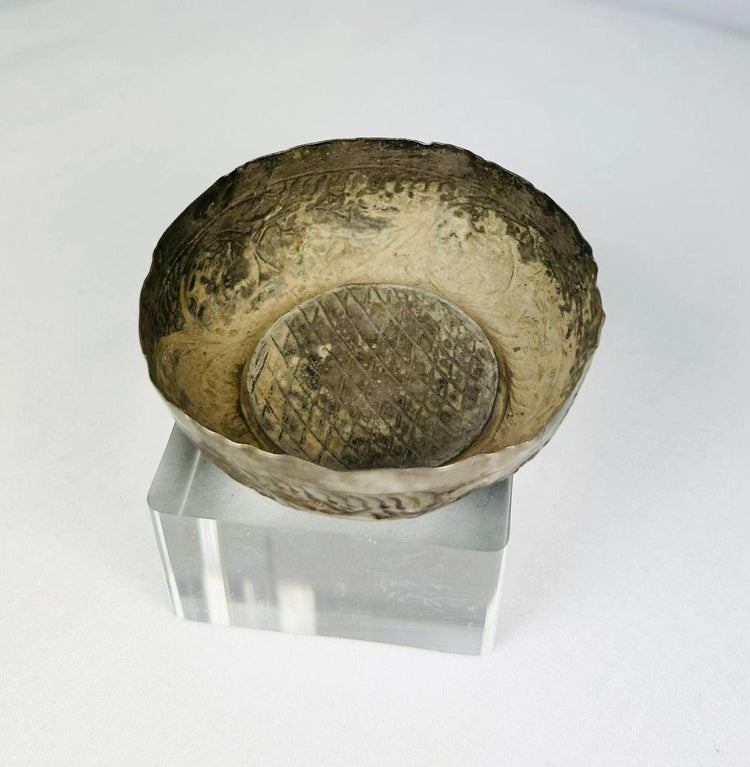Persa selyúcida | Cuenco de ungüento de plata | Siglos XII-XIII
Descripción
Más
Menos
Contexto histórico y origen
Región: Persia (actual Irán, con influencia en Anatolia y el Levante)
Material: Plata
Periodo: Período selyúcida, siglos XII-XIII d. C.
Descripción
Este exquisito cuenco de plata para ungüentos proviene del Imperio selyúcida, una dinastía reconocida por sus logros culturales, artísticos y arquitectónicos durante la Edad de Oro islámica medieval. Finamente elaborado con intrincados grabados florales y geométricos, el cuenco refleja la maestría selyúcida en la metalistería y su capacidad para combinar la utilidad con el arte. Estos cuencos se utilizaban para contener aceites, ungüentos o perfumes preciosos tanto en contextos ceremoniales como domésticos de élite, representando el refinamiento y el alto estatus.
Características
- Cuenco de plata elaborado artesanalmente con delicados grabados florales y geométricos.
- Forma compacta diseñada para almacenar aceites, ungüentos o perfumes.
- Borde ligeramente irregular, sello distintivo de la auténtica metalistería selyúcida forjada a mano.
- Rica pátina natural que realza tanto la edad como el carácter histórico.
Importancia cultural
El Imperio selyúcida (siglos XII-XIII) fue un floreciente centro de arte y cultura islámicos, dejando un legado perdurable en Persia, Anatolia y más allá. Artículos de metal como este cuenco no solo cumplían fines prácticos, sino que también simbolizaban la riqueza, la sofisticación y los intercambios culturales de la época. Los motivos florales y geométricos son emblemáticos de la expresión artística selyúcida, destacando su singular combinación de belleza, simbolismo y funcionalidad.
Condición
El cuenco está bien conservado, con sutiles signos de desgaste y antigüedad, incluyendo un borde ligeramente irregular. Su superficie exhibe una pátina plateada estable, lo que confirma su origen centenario y su autenticidad.
Dimensiones (aproximadas)
Diámetro: 2,5 pulgadas
Edad
Siglos XII-XIII d. C.
Descripción
Contexto histórico y origen
Región: Persia (actual Irán, con influencia en Anatolia y el Levante)
Material: Plata
Periodo: Período selyúcida, siglos XII-XIII d. C.
Descripción
Este exquisito cuenco de plata para ungüentos proviene del Imperio selyúcida, una dinastía reconocida por sus logros culturales, artísticos y arquitectónicos durante la Edad de Oro islámica medieval. Finamente elaborado con intrincados grabados florales y geométricos, el cuenco refleja la maestría selyúcida en la metalistería y su capacidad para combinar la utilidad con el arte. Estos cuencos se utilizaban para contener aceites, ungüentos o perfumes preciosos tanto en contextos ceremoniales como domésticos de élite, representando el refinamiento y el alto estatus.
Características
- Cuenco de plata elaborado artesanalmente con delicados grabados florales y geométricos.
- Forma compacta diseñada para almacenar aceites, ungüentos o perfumes.
- Borde ligeramente irregular, sello distintivo de la auténtica metalistería selyúcida forjada a mano.
- Rica pátina natural que realza tanto la edad como el carácter histórico.
Importancia cultural
El Imperio selyúcida (siglos XII-XIII) fue un floreciente centro de arte y cultura islámicos, dejando un legado perdurable en Persia, Anatolia y más allá. Artículos de metal como este cuenco no solo cumplían fines prácticos, sino que también simbolizaban la riqueza, la sofisticación y los intercambios culturales de la época. Los motivos florales y geométricos son emblemáticos de la expresión artística selyúcida, destacando su singular combinación de belleza, simbolismo y funcionalidad.
Condición
El cuenco está bien conservado, con sutiles signos de desgaste y antigüedad, incluyendo un borde ligeramente irregular. Su superficie exhibe una pátina plateada estable, lo que confirma su origen centenario y su autenticidad.
Dimensiones (aproximadas)
Diámetro: 2,5 pulgadas
Edad
Siglos XII-XIII d. C.
También te puede interesar























